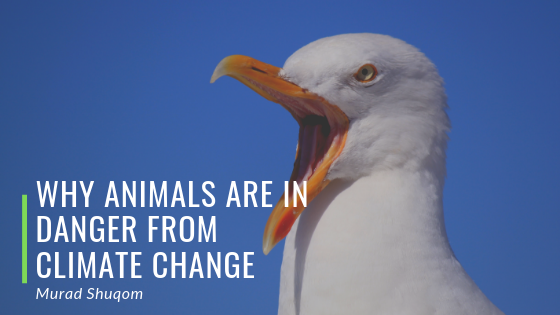Climate change is wreaking havoc on all parts of our living planet: from the oceans to the rainforests to the animals. Our environment is in crisis, and animals are paying the ultimate price for humanity’s refusal to change their destructive ways. Specifically, animals are in danger from climate change because of the increasing global temperatures, an inability to change at an evolutionary pace sufficient for survival, and drastically different environmental conditions to endure.
Increasing Temperatures
Increasing temperatures globally are creating chaos for animals. Heatwaves are causing mass deaths for creatures such as birds who are not able to endure the extreme heat. They are dying of heat exhaustion in their nests. Glaciers are thawing because of climate change, which causes the sea levels to rise and inundate animal habitats in saltwater environments. Ice is melting, and animals that depend on the ice for shelter and food no longer have a safe place to live and hunt. To further elaborate, polar bears suffer greatly when the ice melts, as they can no longer go out on the ice floes and hunt for fish.
Evolutionary Change
Climate change continues to happen exponentially daily. It is happening so quickly that animals simply cannot keep up and adapt to their new realities. Changes in evolution generally occur at a slow rate, not at the rate necessary to keep up with climate change. While some animals might appear to be adjusting to a significantly altered environment, these are actually behavioral changes brought on as a result of environmental changes. For example, some species of birds have started to breed earlier in the year, as Spring now comes quicker as a result of a warmer climate. However, the baby birds might not have enough food to eat if the insects and caterpillars they dine on do not also breed earlier. The birds are hatching because of an earlier Spring, not because of an evolutionary change.
Environmental Conditions
Animals are severely threatened because of drastically different environmental conditions brought on by climate change. In addition to heat waves and warmer air and water temperatures, storms are more damaging, sea levels are rising, forests are dying, food is less plentiful, wetlands are being destroyed, habitats are burning, air pollution is increasing, and their biorhythms are upset. Humans need to significantly alter their lifestyles if there is any hope to protect animals (and themselves) from climate change.

